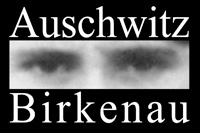




Children
There were a few children among the adult Poles deported to Auschwitz as early as 1940. At the turn of 1942/1943, children from the Zamość region were sent to the camp along with adults, and in 1944, children from Warsaw during the Uprising there. Jewish children began to be deported with their families to Auschwitz in 1942. The great majority were sent to die in the gas chambers after selection. Sporadically, teenage boys and girls were picked for registration in the camp. For a time, children from the Theresienstadt ghetto were held with their families in the so‑called Theresienstadt family camp (BII b) in Birkenau. Similarly, Roma children stayed with their parents in the so‑called Zigeunerlager. Both camps were liquidated in the end and little children still alive there were murdered. Children, along with adults, were also deported to Auschwitz from occupied Soviet territory (mostly Belarus) in 1943–1944.
Until mid‑1943, all children born in Auschwitz were murdered—usually by phenol injection or drowning. Later, non‑Jewish newborns were allowed to live. They were entered in the camp records as new arrivals. Due to the woeful conditions in the camp, few lived long. Children born to Jewish mothers were murdered until the end of October 1944, when the SS halted the mass killing of Jews.
The extant records note the birth of at least 700 children in Auschwitz. It is estimated, basing on the approximate data, that over 232,000 children and young people were deported to Auschwitz, of whom 216,000 were Jews, 11,000 Roma, about 3,000 Poles, more than 1,000 Belarusians, and several hundred Russians, Ukrainians, and others. A total of about 23,000 children and young people were registered in the camp. Slightly more than 700 were liberated on the territory of Auschwitz in January 1945.
